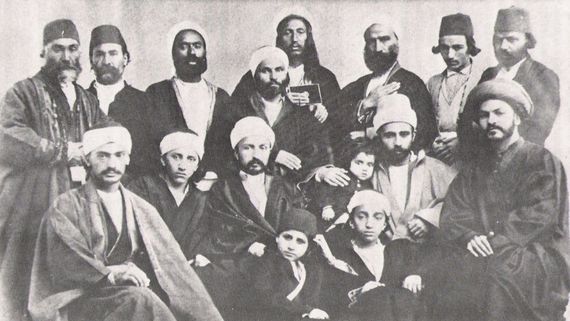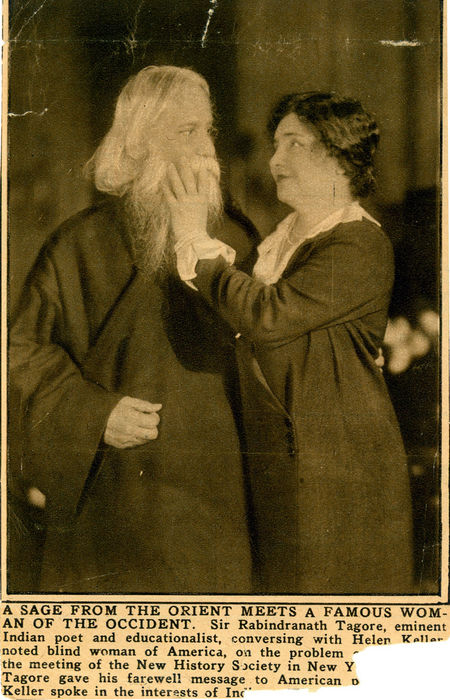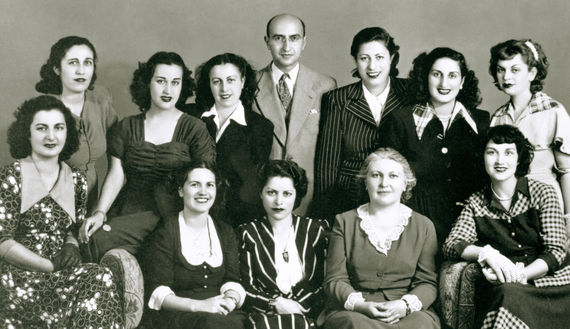
"The earth is but one country, and mankind its citizens."
Baha’u’llah,
founder of the Baha’i Faith
In mid-19th century Iran, a young merchant by the name of Ali Muhammad Shirazi, proclaimed that he was the bearer of a message destined to transform humanity. He went by the name Bab, (gate in Arabic) believing that he was the gate to the Twelfth Imam and thus signaling a break with Islam. He began a new religion, Babism, which postulated that a new era in human history had begun that would witness the unification of the human race and the emergence of a world civilization of spiritual and material prosperity. The Bab’s mission lasted only six years but his religion became the predecessor to the Baha'i faith.
The Baha'i faith is not a religion practiced by monks isolated faraway in the Himalayas as some may believe; there are Baha'i adherents on every continent of the world, including Armenia.
Baha’is don’t deny any other religion but rather build on the already existing knowledge provided by them. And as Baha'i followers state, their religion is the continuation of all other religions.
Essential themes in the Baha’i faith include the oneness of God and religion, the oneness of humanity and freedom from prejudice, the inherent nobility of the human being, fundamental equality of the sexes, integration of worship and service, harmony between religion and science and the centrality of justice to all human endeavors among other things all working toward advancing humanity towards its collective maturity.
Irshat Madyarov, a Baha’i living and working in Armenia pointed out the important role of education and the concept of unity in their religion. “Unity is built when people are informed, when people are not slaves to prejudices,” he explained. Describing the Bahai’i faith in three words he underscored unity, service and growth as the critical underlying concepts of the religion.
Although it originated less than two centuries ago, the Baha'i Faith is considered one of the major religions of the world and today has about 7 million followers globally.
Baha’u’llah, the founder of the Baha’i faith, became a follower of the Bab in 1845. The Bab had proclaimed that God would send a prophet and in 1863 after being banished from Iran, Baha’u’llah, claimed to be that messenger. After the death of Baha’u’llah his son 'Abd ol-Baha assumed the position of the leader of the Baha'i community and due to his efforts the religion spread to North America, Europe, and other continents.


The history of the Baha’i community in Armenia dates back to 1889 when the Russian government recognized the community and its independent nature. However, during the Soviet era the community ceased its activities. Community life revived after the collapse of the Soviet Union. This points to an important feature of the religion, which is compliance with the governments of the countries where communities exist and conduct their activities.
In modern day Armenia, the community organizes gatherings every 19 days as is the practice in every Baha’i community throughout the world. According to the calendar established by the founder of the religion Baha’u’llah, the year is divided to 19 months with 19 days each, and every 19th day of the month community members gather together and have readings and discussions of the writings of Baha’u’llah and other religious leaders. The Armenian Baha’i community also organizes special courses for children and teenagers.
Irshat Madyarov, spoke to EVN Report about his own transformative experience within the religion in terms of relationships with people, the purpose of life, identity and discovering spirituality. “One transformative moment was understanding that as I grow and change myself whatever it is intellectually, professionally, physically maybe, spiritually; I have a responsibility to grow and change the reality around me because it's part of our nature” he said. The Baha’i faith states that if people do not try to change the reality around them and care about others, they do not fulfill themselves and their mission.
The Armenian Connection
According to Madyarov, there is an Armenian connection dating back to the time of the Bab. As the messenger and prophet of the religion, the Bab was charged with apostasy and ordered to be executed by the Prime Minister of the Persian Empire in 1850. A regiment of Armenian soldiers led by Sam Khan was ordered to carry out the execution.
Hasan Balyuzi, a prominent Iranian member of the Baha’i faith who wrote several articles and books about the religion recounts the story of Sam Khan in his book, “The Bab: The Herald of the Days of Days.”

“Sam Khan approached the Bab: 'I profess the Christian Faith and entertain no ill will against you. If your Cause be the Cause of truth, enable me to free myself from the obligation to shed your blood.' To this the Báb replied: 'Follow your instructions, and if your intention be sincere, the Almighty is surely able to relieve you from your perplexity.'
The Báb and His disciple were suspended by ropes from a nail in the wall, the head of Mirza Muhammad-'Ali resting on the breast of the Báb. Seven hundred and fifty soldiers were positioned in three files. Roofs of the buildings around teemed with spectators.
Each row of soldiers fired in turn. The smoke from so many rifles clouded the scene. When it lifted the Báb was not there. Only His disciple could be seen, standing under the nail in the wall, smiling and unconcerned. Bullets had only severed the ropes with which they were suspended. Cries rang out from the onlookers: 'The Siyyid-i-Báb has gone from our sight!'”
According to Bayluzi, Khan refused to attempt a second execution and was replaced by the Nasiri regiment who did follow through and executed Bab and his follower in the same spot.
Unlike Iran, followers of the Baha'i faith in Armenia - an ethnically and religiously homogeneous society - are not subject to persecution or ill-treatment from government authorities or the major religious community. Madyarov as well as Edward Manasyan, another member of the Baha’i community in Armenia, both confirmed this from their own experience living and working in the country.
Iran has one of the largest Baha’i populations in the world, followed by India. Baha’is continue to face persecution in Iran as they are seen as apostates from Islam. The overwhelming majority of Iranians adhere to the Twelver branch of Shia Islam which believes that the Twelve Imams are the spiritual successors to Muhammad. One of their core doctrines is the expected coming of the Imam Mahdi - a messianic figure. Baha’u’llah claimed to be the one foretold as the prophet by the Bab, and thus considered himself to be the Manifestation of God.
The reasons for persecution also stem from the teachings of Baha’i leaders and the core ideology of the religion. Baha’i faith promotes the oneness of humanity and the abolition of racial, class, and religious prejudices, as well as the importance of education and the active role of women in society.

Madyarov also touched upon the importance of women in the religion by pointing that women should have equal rights with men especially as it concerns education as they are the ones educating children and acting as sources of knowledge for the younger generation. “Whenever there is a choice between a boy and a girl to receive education, a girl should be chosen,” he said.
“The humankind is a bird with two wings - a man, and a woman, and unless they are of equal size, the bird will never fly. And unless they are of equal strength, the flight is impossible as well.”
Abdu'l-Baha
The first Baha’i House of Worship was built in Ashgabat, the capital of modern-day Turkmenistan in 1902. Today there are eight Houses of Worship around the world.
A major event will be organized by the Baha’i community in Yerevan this October to commemorate the 200th anniversary of the birth of the founder of their religion.



